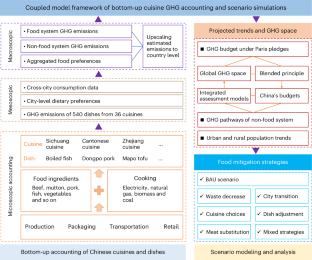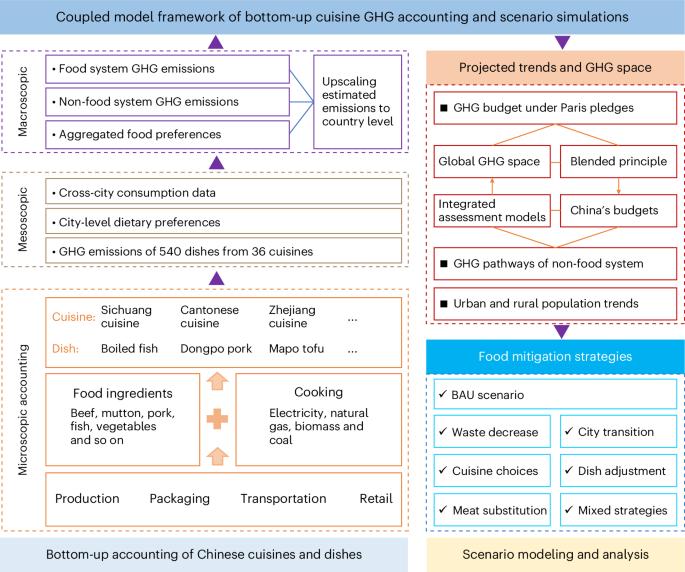GHG mitigation strategies on China’s diverse dish consumption are key to meet the Paris Agreement targets
IF 23.6
Q1 FOOD SCIENCE & TECHNOLOGY
引用次数: 0
Abstract
Combatting climate change depends on demand-side mitigation strategies related to food, which is in turn contingent on explicit estimation and management of dish-level emissions. Here, on the basis of a bottom-up integrated emissions framework, we first estimate the greenhouse gas emissions of 540 dishes from 36 cuisines using data from over 800,488 restaurants in China’s provincial capital cities. By mining residents’ dietary preferences, we then design various dietary change strategies to explicitly link food emissions to the Paris Agreement pledges. The results show that China’s food system greenhouse gas emissions were approximately 4.64 GtCO2eq in 2020, accounting for 37% of total emissions, with average per-dish emissions of 8.44 kgCO2eq. Current emission patterns of food consumption in China may not be consistent with the attainment of the 1.5 °C and 2 °C climate targets, but transitioning towards low-emission cuisines and dishes could change that by reducing emissions by 38–69%. Estimates of greenhouse gas emissions related to food consumption typically consider ingredients, rather than final dishes. This study combines over 500 real-life restaurant menu dishes with data on 170 million consumed meals in China, highlighting the potential of consumers to mitigate climate change through modifications in their eating patterns.


中国多样化菜肴消费的温室气体减排战略是实现《巴黎协定》目标的关键
应对气候变化有赖于与食品相关的需求侧减排战略,而这又取决于对菜肴一级排放的明确估算和管理。在此,我们以自下而上的综合排放框架为基础,利用中国省会城市超过 800,488 家餐馆的数据,首先估算了 36 种菜系中 540 种菜肴的温室气体排放量。通过挖掘居民的饮食偏好,我们设计了各种饮食改变策略,将食品排放与《巴黎协定》承诺明确挂钩。结果显示,2020 年中国食品系统温室气体排放量约为 4.64 GtCO2eq,占总排放量的 37%,平均每道菜的排放量为 8.44 kgCO2eq。目前中国食品消费的排放模式可能与实现 1.5 ℃ 和 2 ℃ 的气候目标不一致,但向低排放菜肴和菜肴过渡可以改变这一状况,使排放量减少 38-69%。
本文章由计算机程序翻译,如有差异,请以英文原文为准。
求助全文
约1分钟内获得全文
求助全文

 求助内容:
求助内容: 应助结果提醒方式:
应助结果提醒方式:


